While rack mounted and ground mounted solar PV systems are more commonly found, building integrated photovoltaic (BIPV) systems are slowly catching on as an up and coming trend in the solar world. Since frameless and translucent solar modules are generally used for BIPV installations, these solar PV systems are able to seamlessly merge with the structure of the building and can add to the aesthetics of the architecture. In some cases, the solar modules of BIPV systems can actually replace building materials such as windows or roof tiles. Solar shingles/tiles are not as cost effective and don’t produce as much power as a regular solar panel. So if you are looking to install a BIPV system, it would be best to stick to frameless, translucent or conventional solar modules like the ones that we have used on many of our own BIPV installations:
17.25 kW Grid Tied BIPV system under construction at the University of Alberta PAW Centre
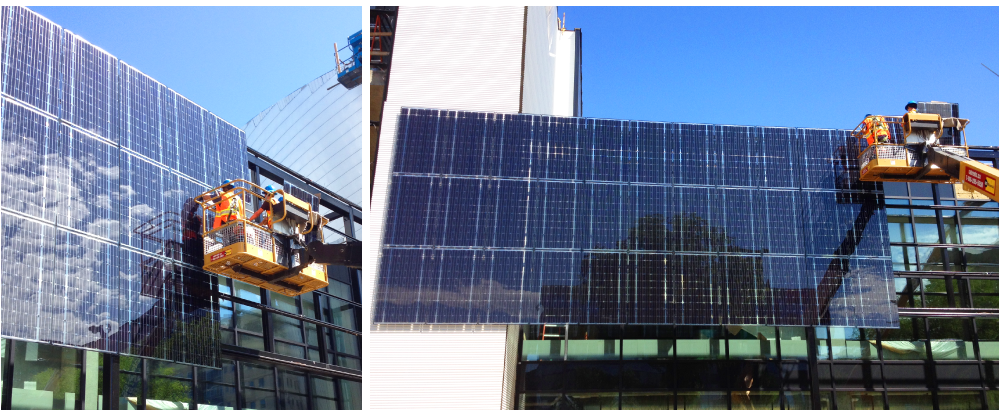
2.28kW residential BIPV system for the One House Green project in Calgary
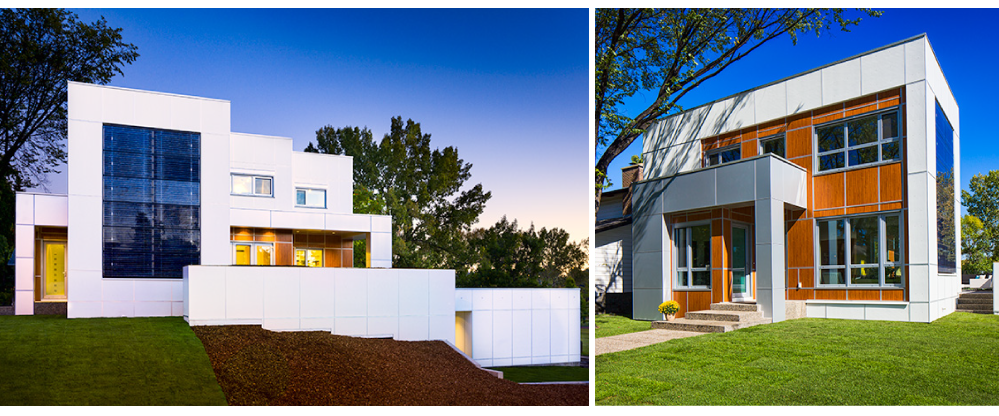
Image credit: http://onehousegreen.com/see/
9.6 kW frameless solar rooftop in Invermere, B.C.
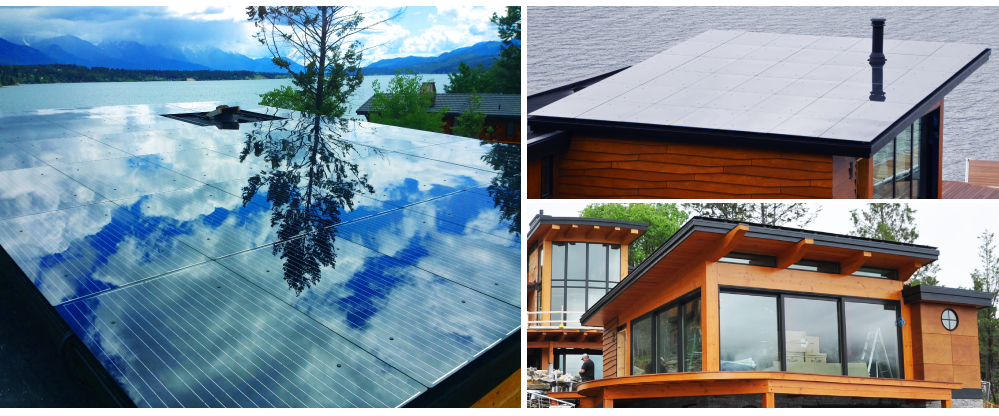
Here’s a great example of a BIPV system that was built with standard GE 200 Watt solar modules. We were able to use conventional solar modules in this scenario because the solar modules were mounted as window awnings and needed to provide shade. This 43.4 kW BIPV system on the University of Calgary’s Child Development Centre, was awarded CanSIA’s ‘2007 Solar PV Project of the Year’. With the inclusion of solar on this building, the Child Development Centre achieved LEED Platinum status; making it the first in the world to achieve this status in a cold climate.
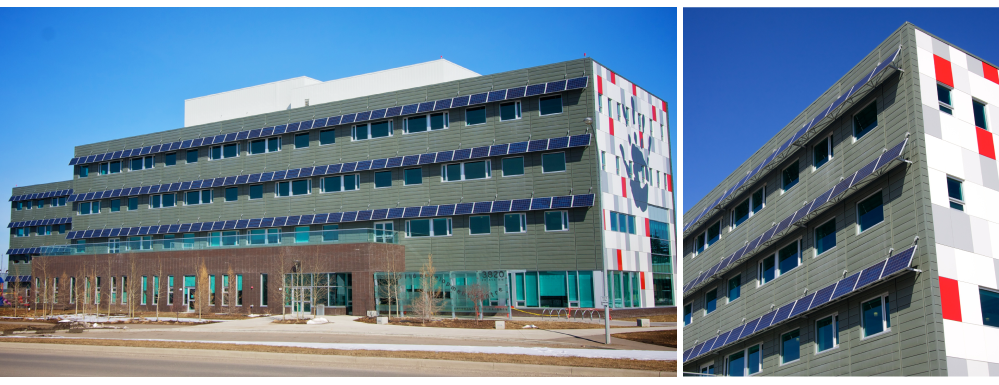
We are currently installing a similar solar PV awning system on Landmark Group’s office in Edmonton.
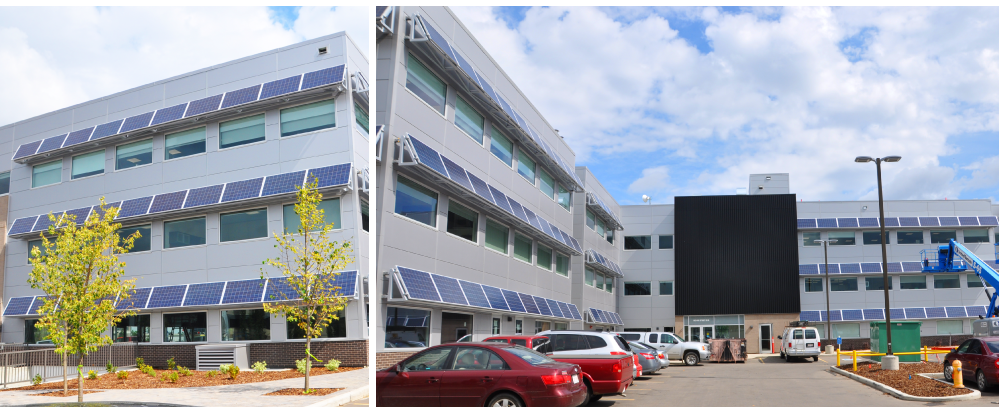
While BIPV systems have greater aesthetic appeal, it is important to note that these systems usually come with a larger price tag.
There are several factors that contribute towards its premium price tag such as:
1) Frameless and translucent solar modules used for BIPV systems are often double the price of standard solar modules.
2) BIPV modules may require additional materials (e.g. adhesives, framing and flashing materials).
3) Additional labour costs are incurred due to specialized architectural design, engineering design and installation.
In some cases, the BIPV system can instead offer an offset value through the replacement of traditional building materials.
In addition to costing more than standard PV systems, BIPV systems may also experience higher operating temperatures because, unlike rack-mounted PV, it is usually flush with the building surface and does not permit airflow between module and building structure. Higher temperatures affect the conversion efficiency of the panels, causing it to produce less electricity, which will in turn lead to higher energy costs. One way you can avoid this is by allowing sufficient airflow in between the solar panels and building structure. For instance, with the One House Green project showcased above, we installed the solar modules on the south-facing wall of the home and created a semi-translucent array that actually pre-heats the fresh air intake for the building during the winter months. By drawing the air from behind the modules, the array will be able to cool down faster and produce more energy.
So what do you think? Does BIPV have what it takes to be the future of solar? We believe BIPV has great residential and commercial application potential as it fits in perfectly with modern architecture and sustainable design.

